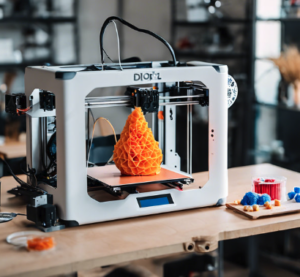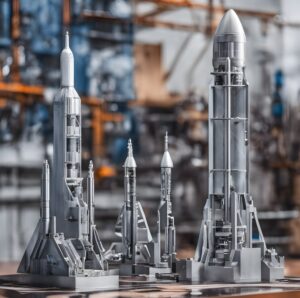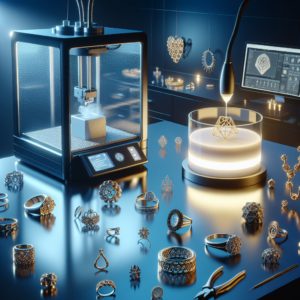What is a 3D Printer Bed? Understanding the Foundation of 3D Printing

3D printing, or additive manufacturing, has emerged as a transformative technology in various fields, including engineering, healthcare, automotive, and even fashion. At the heart of every 3D printer lies a fundamental component that determines the success of the entire printing process: the 3D printer bed. While it may seem like a simple, static part of the machine, the 3D printer bed plays an essential role in the quality, precision, and overall success of a print.
The 3D printer bed serves as the foundation where each layer of the 3D model is built upon, ensuring the object adheres properly and stays in place throughout the process. It is one of the first things users interact with when setting up a printer, and its condition can significantly impact the outcome of the print.
This article aims to provide a thorough understanding of the 3D printer bed, explaining its types, functionality, materials, maintenance tips, and innovations in 2024. Whether you’re a novice looking to learn more or an experienced 3D printing enthusiast, this guide will equip you with the knowledge needed to optimize your printing experience.
What is a 3D Printer Bed?
The 3D printer bed, sometimes referred to as the print bed, is the flat surface on which a 3D object is printed layer by layer. It provides the necessary surface for the first layer of filament to adhere to, preventing shifting or warping as the print progresses. The bed is integral to achieving successful prints, as improper adhesion can lead to failed prints, misalignment, and wasted material.
During the printing process, a heated bed helps to maintain consistent temperature conditions, crucial for ensuring that the material doesn’t warp or deform while cooling. A poorly maintained or incorrectly adjusted bed will result in inconsistent print quality, so understanding the role of the bed is vital to achieving optimal results.
The bed also serves as the key area where adhesion plays a critical role. Proper adhesion prevents the printed object from lifting off the bed during the process, which can cause issues such as prints failing mid-way or distortions in the object.
Types of 3D Printer Beds
Heated vs. Non-Heated Beds
A fundamental distinction among 3D printer beds is whether they are heated or non-heated. Each type has its benefits and is suitable for different printing materials.
-
Heated Beds: These are equipped with a built-in heating element that maintains a consistent temperature across the surface. Heated beds are particularly useful for materials like ABS (Acrylonitrile Butadiene Styrene), PETG (Polyethylene Terephthalate Glycol), and nylon, which are more prone to warping when exposed to rapid temperature changes during the printing process.
-
Why Heated Beds are Important: Heated beds provide better adhesion for certain filaments and reduce the chances of warping. By ensuring the first few layers stay warm, the material bonds better with the bed surface and reduces shrinkage as it cools.
-
Temperature Control: Heated beds can be adjusted to accommodate various materials. For example, an ABS print may require a bed temperature of 100°C, while PLA prints typically work well with beds set between 50-60°C. Some heated beds also come with temperature sensors for precise control.
-
-
Non-Heated Beds: Non-heated beds are generally more affordable and found in many entry-level 3D printers. While these beds don’t have the capability to warm up, they are still suitable for printing with materials like PLA (Polylactic Acid), which is less prone to warping.
- Why Non-Heated Beds are Useful: For users printing smaller objects or primarily with PLA filament, non-heated beds can be a cost-effective choice. However, users must rely on adhesives like glue sticks, painter’s tape, or proprietary adhesives to ensure that prints stick to the bed.
Material Types
The material of the printer bed can affect the printing process in terms of adhesion, durability, and even the final print quality. Some of the most common materials used for 3D printer beds include:
-
Glass Beds: Glass provides a smooth surface, offering great print quality, especially for precise prints. It is one of the most popular choices among 3D printing enthusiasts and professionals because of its durability and smooth finish.
-
Advantages of Glass Beds: Glass is non-stick, ensuring that prints can be easily removed once finished. Additionally, it provides even heat distribution, which is ideal for accurate prints.
-
Drawbacks: Glass is more fragile than other materials and can break if not handled properly. Users may also need to use additional adhesion methods like hairspray or glue sticks to ensure prints stay in place.
-
-
Aluminum Beds: Aluminum beds are lightweight, durable, and excellent at heat distribution. These beds are often favored for their affordability and efficiency in spreading heat evenly, which helps prevent warping during the printing process.
-
Advantages of Aluminum Beds: They are resistant to wear and tear, and their lightweight nature makes them easier to handle. Additionally, aluminum has excellent thermal conductivity, making it an ideal choice for fast and consistent heating.
-
Drawbacks: While aluminum is durable, it doesn’t always offer the same smoothness as glass, which can affect print surface quality. Some users may prefer to coat aluminum beds with PEI (Polyetherimide) for better adhesion.
-
-
PEI-Coated Beds: PEI is a polymer coating applied to beds to enhance adhesion, especially when printing with challenging materials like ABS or Nylon. PEI-coated beds are known for their excellent adhesion properties and are becoming more popular in modern 3D printers.
-
Advantages of PEI-Coated Beds: These beds provide a durable surface that improves print adhesion without the need for additional adhesives. They can also handle high-temperature filaments and require less maintenance than glass or aluminum beds.
-
Drawbacks: PEI-coated beds can become scratched over time if not properly maintained.
-

How a 3D Printer Bed Works
The primary role of the 3D printer bed is to provide a stable foundation for each layer of the print, which is essential for the success of the project. Here’s how the bed works in the context of the printing process:
-
Adhesion: The printer bed must create a bond with the first layer of material to ensure it doesn’t move during the print. This prevents issues like shifting or misalignment, which could ruin the print. Depending on the type of material being printed, the bed will either be heated to ensure adhesion or rely on external adhesives.
-
Temperature Control: For most 3D prints, particularly with materials that are prone to warping, the temperature of the bed needs to be controlled precisely. Heated beds allow the first few layers to bond firmly to the surface while maintaining a stable temperature throughout the printing process.
-
Bed Leveling: Proper bed leveling is critical to the success of a 3D print. The bed must be perfectly level so that the nozzle can extrude material evenly across the surface. Many 3D printers come with automatic leveling features, while others require manual adjustments.
Materials Used for 3D Printer Beds
Surface Coatings
Some 3D printer beds come with specialized coatings designed to improve adhesion and ease of print removal. These coatings include:
-
BuildTak: A popular adhesive surface that works well with various filaments, particularly PLA and ABS. It provides a smooth surface while preventing print failure due to poor adhesion.
-
Kapton Tape: Known for its high temperature resistance, Kapton tape is often used for printing materials that require a heated bed. It’s a preferred choice for filaments like ABS and Nylon.
-
Silicone Mats: Silicone mats are another type of surface coating that provides heat resistance and helps in preventing prints from warping or moving during the printing process. These mats are easy to remove and clean.
Why the 3D Printer Bed is Crucial
The bed is central to a successful 3D printing process. Here’s why:
-
Print Quality: If the first few layers of a print aren’t properly adhered to the bed, the rest of the print is at risk. A properly heated and leveled bed ensures smooth, consistent layer bonding, leading to higher print quality.
-
Bed Leveling: Proper bed leveling is essential for achieving uniform prints. If the bed is uneven, it may cause the print to fail, or the nozzle may drag over the bed, damaging both the print and the printer.
-
Material Compatibility: Different types of beds work better with specific types of filament. A heated bed may be necessary for certain materials to ensure optimal print quality, while others like PLA can be printed on non-heated beds.
Maintaining Your 3D Printer Bed
Maintaining the 3D printer bed is crucial for achieving consistent and high-quality prints over time. Regular cleaning, inspection, and calibration ensure that the bed continues to perform optimally.
-
Cleaning: Use isopropyl alcohol or specialized cleaners to wipe down the surface of the bed. This removes any residual filament or dust that could affect the print.
-
Bed Leveling: Regularly check the bed’s level, adjusting it as needed to ensure that the nozzle is the correct distance from the bed. Many modern printers have automated bed leveling, but manual adjustments may still be necessary.
-
Inspect for Wear: Check for signs of wear or damage, such as scratches or uneven surfaces, which can affect print quality. Replacing damaged surfaces is essential for maintaining print accuracy.
Latest Innovations in 3D Printer Beds (2024)
The 3D printing industry has seen several innovations in 2024 that aim to improve the performance, usability, and durability of printer beds:
-
Smart Beds: Some new printers feature smart beds equipped with sensors that can automatically level and adjust the temperature based on the material being used.
-
Eco-Friendly Materials: There is a growing trend in the industry towards using sustainable and environmentally friendly materials for 3D printer beds, reducing the carbon footprint of the printing process.
-
Enhanced Coatings: Advanced coatings such as graphene-infused surfaces offer superior adhesion, especially for high-temperature filaments like Nylon and PETG.
Common Challenges with 3D Printer Beds
-
Warping: One of the most common challenges when printing with certain materials is warping. Heated beds help to minimize this issue, but users must ensure the correct bed temperature is used.
-
Surface Damage: Over time, the bed surface may degrade, leading to a decrease in print quality. Regular maintenance and occasional surface replacements are essential.
-
Bed Leveling Issues: Uneven bed surfaces can lead to poor print results. Automatic bed leveling can help, but manual adjustments may still be required.
The 3D printer bed is a critical component in the 3D printing process, determining the quality, stability, and adhesion of each print. By understanding the different types of beds, materials, and maintenance practices, you can ensure that your 3D printer produces high-quality, reliable results. As the technology continues to evolve, staying informed about the latest innovations in printer beds will help you keep pace with the advancements in 3D printing. Whether you’re just starting or are an experienced user, maintaining your 3D printer bed is key to achieving consistent and successful prints.



